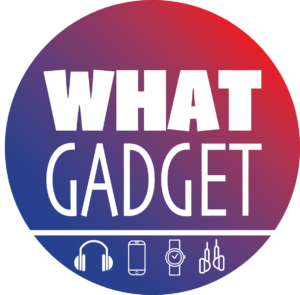If you’ve been to a restaurant, airport, or even a hospital lately, chances are you’ve used a self-service kiosk without even thinking twice. What started as a tool for fast-food chains has now evolved into something much bigger, reshaping customer experiences across countless industries.
From speeding up service to reducing queues and even cutting down on human error, the self service kiosk machine is quickly becoming a modern must-have.
Let’s explore where these smart machines are making the biggest impact and why they’re here to stay.
A quick look at how kiosks came to be
Self-service isn’t a new idea. Vending machines have been around since the late 1800s. But the technology behind today’s kiosk screens has changed dramatically.
Now, with intuitive interfaces, touchscreen navigation, and seamless payment integration, these machines are designed to simplify complex tasks in seconds.
Driven by a need for convenience, speed, and cost-efficiency, industries have started turning to self-service kiosks to solve age-old service challenges. Let’s take a closer look at how this trend is playing out in the real world.
Restaurants are leading the way
1. Fast food and quick-service restaurants
One of the most visible uses of kiosk machines today is in fast food. Brands like McDonald’s, KFC, and Taco Bell have fully embraced this tech, giving customers the ability to browse menus, customise orders, and pay on the spot.
For businesses, it’s a win-win. Orders are more accurate, wait times are shorter, and customers often end up spending more, thanks to gentle upsells built into the interface.
2. Fast-casual and dine-in chains
Panera Bread in the US was one of the early adopters of self-ordering kiosks. By giving people the choice to order without queuing at the counter, they improved both speed and customer satisfaction. Many customers, especially introverts or those in a rush, love the no-pressure ordering experience.
Of course, challenges do exist, like machine downtime or the learning curve for older users. But most restaurants tackle this by keeping staff nearby to help or offering both kiosk and traditional counter options.
Airports: a whole new level of independence
Airports are perhaps where self service kiosk machines have made the most impressive leap.
1. Streamlining check-ins
Remember when checking in for a flight meant standing in a long line with printed documents in hand? Now, most airports have kiosks where you can scan your passport, check in, and print boarding passes or baggage tags, all in under a minute.
This shift has freed up airline staff to help with more complex issues, while giving travellers control over their time.
2. Smarter airport dining and shopping
Airports around the world are also transforming their retail and dining experiences with kiosks. Hungry travellers can now place orders at food court kiosks that serve multiple restaurants. This speeds up service, reduces confusion, and ensures more accurate orders.
Meanwhile, retail stores are using kiosks to let passengers browse product info, check stock, and even make purchases without staff assistance.
3. Navigation and real-time updates
Many airports also use kiosk machines to help travellers find their gates, view flight updates, or even locate amenities like charging stations or restrooms. These user-friendly interfaces are a big help, especially in unfamiliar or busy terminals.
More industries getting on board
The impact of kiosk machines doesn’t stop at food and travel. Let’s look at how they’re branching out elsewhere.
1. Hotels and hospitality
Hotels are starting to introduce self-check-in kiosks in their lobbies. Guests can skip the front desk, receive room key cards, and head straight to their room, which is great for late arrivals or busy periods.
It’s all about flexibility, and many hotel chains are noticing how much their guests appreciate it.
2. Retail stores
Retail is full of examples where kiosk screens are replacing queues. Customers can check prices, locate items in-store, or pay for items using a kiosk, without needing assistance.
This also gives staff more time to focus on restocking or helping customers who need more personalised service.
3. Hospitals and clinics
In the healthcare sector, kiosks help patients check in for appointments, update personal info, or pay bills. They reduce wait times, ease administrative workload, and offer patients more privacy during the registration process.
Especially during high-traffic times, they’re a quiet but powerful support system for front desk staff.
What’s next for self-service kiosks?
We’re just scratching the surface. The future of kiosk technology is leaning into even smarter features like AI-powered recommendations, voice commands, facial recognition, and multilingual support.
As businesses continue to personalise services and improve accessibility, kiosks will likely become even more versatile and user-friendly.
We’re also seeing mobile integration take off, where your smartphone acts as the interface, letting you interact with kiosks remotely. It’s convenience taken to the next level.
Final thoughts
From restaurants to airports and everything in between, the self service kiosk machine has evolved into becoming a core part of how we interact with the world.
It’s not just about cutting costs or speeding things up. It’s about improving how people experience services, making them feel more in control, less stressed, and better served.
So next time you see one, give it a try. You might be surprised how far it’s come.










Recent Comments